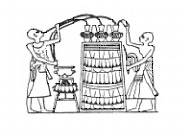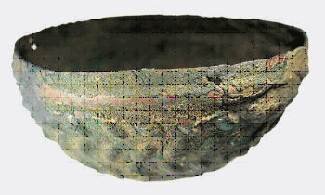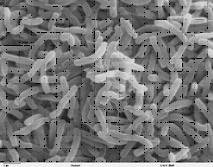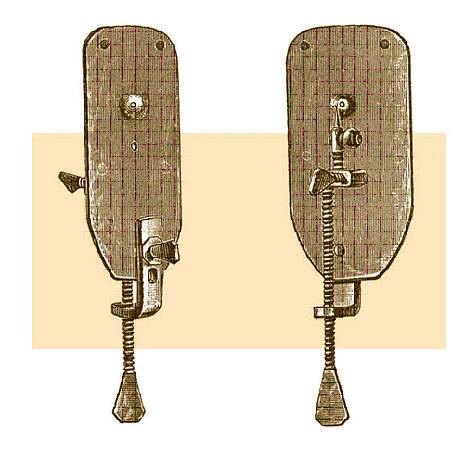13 Nov The History of Water Filtration
When you talk about the history of water filters, one really must talk about the history of water filtration to understand where these devices spawned from. In history, water meant survival, and for civilizations, water sources meant the difference between surviving and thriving. Water was not only necessary for drinking, but for agriculture, sanitation, and in some cases power. The quest for water purification was a slow one in ancient times, the pursuit of quantity was the bigger issue then. As far as purity was concerned, it culminated in the form of aesthetics, i.e., water’s appearance, odor, and in some cases taste. Since early man thought that the taste of the water determined its purity and did not consider that even the best tasting water could contain disease-causing organisms, the concept died with its victims…
Water Treatment in Ancient Scriptures and Writings.
Both the ancient Sanskrit and Egyptian writings clearly reveals the practices that were followed for keeping the water pure and germ free. “Sushruta Samhita” The Sushruta Samhita is a Sanskrit text from 3rd or 4th century AD, on all of the major concepts of ayurvedic medicine with innovative chapters on surgery, attributed to Sushruta. He is widely considered the “Father of Surgery”.
The methods specified in the Sushruta Samhita includes: Boiling, heating under sun, or dipping heated iron into the water. The text also reveals the filtration process according to which water can be purified filtering it through sand and coarse gravel and then allowed to cool. Other purification methods included the use of a kind of stone, known as “Gomedaka,” and the seed of Strychnos potatorum. In other Sanskrit text, Ousruta Samhita filtering through charcoal method is given.
Ancient Egypt
With perfected methods of mummification, the ancient Egyptians, expert in Dehydration, evidenced that they were also experts in hydration as well. Paintings from the Egyptian tomb, dating back to 15th and 13th century B.C clearly depicts the picture of water treatment device.
This ancient Egyptian clarifying device was found pictured on the wall of the tomb of Amenophis II at Thebes. The inscription was carved in 1450 B.C.
IT’S ALL GREEK TO ME…
 Centuries later, Hippocrates, (Baker & Taras, 1981). The famed father of medicine began to conduct his own experiments in water purification. He created the theory of the “four humors,” or essential fluids, of the body that related directly to the four temperatures of the seasons. According to Hippocrates, in order to maintain good health, these four humors should be kept in balance. As a part of his theory of the four humors, Hippocrates recognized the healing power of water. For feverish patients, he often recommended a bath in cool water. Such a bath would realign the temperature and harmony of the four humors. Hippocrates acknowledged that the water available in Greek aqueducts was far from pure in its quality. Like the ancients before him, Hippocrates also believed good taste in water meant cleanliness and purity of that water. Hippocrates designed his own crude water filter to “purify” the water he used for his patients. Later known as the “Hippocratic sleeve,” this filter was a cloth bag through which water could be poured after being boiled (Baker & Taras, 1981). The cloth would trap any sentiments in the water that were causing bad taste or smell.
Centuries later, Hippocrates, (Baker & Taras, 1981). The famed father of medicine began to conduct his own experiments in water purification. He created the theory of the “four humors,” or essential fluids, of the body that related directly to the four temperatures of the seasons. According to Hippocrates, in order to maintain good health, these four humors should be kept in balance. As a part of his theory of the four humors, Hippocrates recognized the healing power of water. For feverish patients, he often recommended a bath in cool water. Such a bath would realign the temperature and harmony of the four humors. Hippocrates acknowledged that the water available in Greek aqueducts was far from pure in its quality. Like the ancients before him, Hippocrates also believed good taste in water meant cleanliness and purity of that water. Hippocrates designed his own crude water filter to “purify” the water he used for his patients. Later known as the “Hippocratic sleeve,” this filter was a cloth bag through which water could be poured after being boiled (Baker & Taras, 1981). The cloth would trap any sentiments in the water that were causing bad taste or smell.
This is SPARTA!
 Other water treatment methods included a drinking cup invented by a ninth century B.C. Spartan lawgiver. The cup was designed to hide badly colored water from its user, causing the mud to stick to its sides. Some of the more credible early water treatment methods included boiling water before transporting it to war zones and filtering it through wick siphons.
Other water treatment methods included a drinking cup invented by a ninth century B.C. Spartan lawgiver. The cup was designed to hide badly colored water from its user, causing the mud to stick to its sides. Some of the more credible early water treatment methods included boiling water before transporting it to war zones and filtering it through wick siphons.
The Greek and Romans too developed various methods for treating water in order to control tastes and odor. Diophanes of the first century B.C. advised putting macerated laurel into rainwater. Later, in the first century A.D., Paxamus proposed that bruised coral or pounded barley, in a bag, be immersed in bad tasting water. The eighth century A.D. Arabian alchemist, Gerber, described various stills for purifying water that used wick siphons-a method that required a fibrous cord that would siphon water from one vessel to another.
Dark Ages

During the Middle Ages, few experiments were attempted in water purification or filtration. Devout Catholicism throughout Europe marked this time period, often known as the Dark Ages due to the lack of scientific innovations and experiments. Because of the low level of scientific experimentation, the future for water purification and filtration seemed very dark.
The Renaissance period, beginning in the late fourteenth century, ended the scientific and intellectual stagnation of the Dark Ages and sparked a new period of discovery. In this period, often called the Age of Discovery, several inventions came about that greatly affected the world. Included among these inventions was the microscope, a scientific innovation that greatly affected the history of water filters.
Experimental Beginning of Desalination

Sir Francis Bacon in his famous compilation “A Natural History of Ten Centuries” 1627 (Baker & Taras, 1981) talked elaborately about desalination, basically first record of experimentation in water filtration, after the blight of the Dark Ages, According to him if seawater is allowed to percolate through the sand, it can be purified. Bacon believed that if he dug a hole near the shore through which seawater would pass, sand particles (presumable heavier than salt particles) would obstruct the passage of salt in the upward passage of the water; the other side of the hole would then provide pure, salt-free water. Sadly, his hypothesis did not prove true, and Bacon was left with salty, undrinkable water. His experiment did mark rejuvenation in water filter experimentation. However, this publication did inspire scientists to continue to experiment with water filtration technology.
The experiment of sand filtration was first illustrated by the famous Italian physician Lucas Antonius Portius. He wrote elaborately about the multiple sand filtration method in his famous book “Soldier’s Vade Mecum”. He illustrated water filtration experiment by using three pairs of sand filters.
The Microscope
In 1590, two Dutch spectacle makers, Zaccharias Janssen and his son Hans, began experimenting with lenses in a tube and found that they could greatly magnify objects viewed through the tube (Wilson, 1995). This invention was the forerunner to modern-day telescopes and microscopes.
A century later, Anton van Leeuwenhoek, considered the father of microscopy, built upon the Janssen’s simple invention. By grinding and polishing the tiny curved lenses, he was able to reach magnifications of up to 270 times the original object (Wilson, 1995). This advanced microscope had a great effect upon the study of water purity and water filtration. Scientists were now able to view tiny material particles present in water that had been presumed to be clean.
Anton van Leeuwenhoek used his discovery of the microscope to see and describe the teeming life in a single drop of water. Robert Hooke, considered the English father of microscopy, confirmed Leeuwenhoek’s descriptions of tiny, living organisms in a drop of water and further refined the microscope. Soon scientists were examining tiny particles of life they had never before seen nor known existed prior to the invention of the microscope.
 The microscope has an interesting place in water filter history. In mid-19th century London, where diseases ran rampant because of the tight quarters of the working class, city officials began to link the spread of cholera to poor drinking water quality (Baker & Taras, 1981). In areas where sand water filters had been installed, the outbreak of cholera had greatly decreased. To further corroborate this conclusion, In 1854, the British scientist John Snow found that the cholera disease was spread through contaminated water, a discovery that would greatly impact the future of water treatment and disinfection. While studying cholera epidemics in municipal areas of England, Snow noticed that regions that used slow sand filtration before distributing water tended toward fewer cholera cases. Eventually, he was able to trace the outbreaks of cholera to a particular water pump that had been contaminated by raw sewage. Ironically, this was from a pump that was known to produce good tasting water, once again divorcing “good taste” with purity. Snow used chlorine to kill the cholera bacteria in the water, leading to the rise of water chlorination as an effective disinfection process. His work also revolutionized the prevalent theory that good-tasting and odorless water naturally meant it was healthful and safe. Because the contaminated water had contained no detectable taste or odor, Snow surmised that water quality could not be established by those criteria alone. After his findings were published, several cities began to treat all water with sand filters and chlorine before distributing it to the public.
The microscope has an interesting place in water filter history. In mid-19th century London, where diseases ran rampant because of the tight quarters of the working class, city officials began to link the spread of cholera to poor drinking water quality (Baker & Taras, 1981). In areas where sand water filters had been installed, the outbreak of cholera had greatly decreased. To further corroborate this conclusion, In 1854, the British scientist John Snow found that the cholera disease was spread through contaminated water, a discovery that would greatly impact the future of water treatment and disinfection. While studying cholera epidemics in municipal areas of England, Snow noticed that regions that used slow sand filtration before distributing water tended toward fewer cholera cases. Eventually, he was able to trace the outbreaks of cholera to a particular water pump that had been contaminated by raw sewage. Ironically, this was from a pump that was known to produce good tasting water, once again divorcing “good taste” with purity. Snow used chlorine to kill the cholera bacteria in the water, leading to the rise of water chlorination as an effective disinfection process. His work also revolutionized the prevalent theory that good-tasting and odorless water naturally meant it was healthful and safe. Because the contaminated water had contained no detectable taste or odor, Snow surmised that water quality could not be established by those criteria alone. After his findings were published, several cities began to treat all water with sand filters and chlorine before distributing it to the public.
As British government officials noted the effect of water quality on cholera outbreaks, both through Snow’s discovery and through the evidence of decreasing cases of cholera where sand water filters had been installed, they mandated the installation of sand water filters throughout the city. This mandate was one of the first instances of government regulation of public water and would set a precedent for municipal water systems.
Municipal Water Treatment Begins
In the year 1804, the first large municipal water treatment plant was installed in Scotland in order to provide treated water to every resident (Baker & Taras 1981). This revolutionary installation prompted the idea that all people should have access to clean drinking water. However, it would be some time before this ambitious idea would be implemented widely throughout the world.
Cholera and Chlorination. Municipal water treatment on similar pattern was installed in London in 1829.
The sand filtration method saw further progress when rapid sand filtration was developed in the U.S. in the 1880s. In this unit water jets or backwashes were used for cleaning the filter media and mechanical agitators were used for loosening debris. This enhances the treatment capacity. Taste and odor of water was improved by the use of charcoal filtration.
In the late nineteenth century, municipal water treatment began to take hold in the United States. Technicians started experimenting with rapid, as opposed to slow, sand filtration and found the process to be much more efficient and effective. Also, the overall capacity and lifetime of the filter could be improved by cleaning it with a powerful steam jet, thus increasing the number of residents who could be served by one treatment plant. As a result of increased water treatment and chlorination within several U.S. cities and around the world, the outbreak of such waterborne diseases as cholera and typhoid rapidly decreased in the early twentieth century.
Softening and Ion Exchange
 By the early 1900s, water treatment experimentation had turned from the prevention of waterborne diseases to the creation of softer, less-mineralized water. Water softeners, which use sodium ions to replace water-hardening minerals in water, were first introduced into the water treatment market in 1903. The theory of ion exchange (in which a harmless or more desirable water ion is used to replace a harmful one) implemented by the softening systems would greatly impact the water treatment industry in later years — the theory would eventually be used to remove lead, mercury, and other insidious heavy metals from water.
By the early 1900s, water treatment experimentation had turned from the prevention of waterborne diseases to the creation of softer, less-mineralized water. Water softeners, which use sodium ions to replace water-hardening minerals in water, were first introduced into the water treatment market in 1903. The theory of ion exchange (in which a harmless or more desirable water ion is used to replace a harmful one) implemented by the softening systems would greatly impact the water treatment industry in later years — the theory would eventually be used to remove lead, mercury, and other insidious heavy metals from water.
First Government Regulations
As municipal water treatment eventually became a common practice in most U.S. cities, federal and state governments began to recognize the importance of drinking water standards for municipalities. While some limited drinking water standards would be implemented as early as 1914 (EPA 2000), it would not be until the 1940s that federal drinking water standards were widely applied. But the most comprehensive federal regulations and standards for the water treatment industry were implemented in the 1970s, in reaction to a huge increase in environmental concerns in the country. In 1972, the Clean Water Act passed through Congress and became law, requiring industrial plants to proactively improve their waste procedures in order to limit the effect of contaminants on freshwater sources. In 1974, the Safe Drinking Water Act was adopted by all 50 U.S. states for the regulation of public water systems within their jurisdictions. This law specified a number of contaminants that must be closely monitored in water and reported to residents should they exceed the maximum contaminant levels allowed by the federal government. Drinking water systems are now closely monitored by federal, state, and municipal governments for safety and compliance with existing regulations.
Ceramic Filtration History
John Doulton founded his first pottery in 1815 at Lambeth, England on the banks of the Thames river. The main products of the original company were ceramic busts, figurines, canning jars and tableware. Influenced by the unrelenting progress of the Industrial Revolution, Doulton placed equal emphasis on industrial applications for ceramic technology. As early as 1827, this fine china manufacturer was in the water treatment business, using various earth and clay materials in the first Doulton water filters.
In 1835, Queen Victoria recognized the present health dangers in her drinking water and commissioned Doulton to produce a water filter for the Royal household. Doulton created a gravity fed stoneware filter that combined the technology of a ceramic filter with the artistry of a hand crafted pottery water container. In consideration of her pleasure with the new device, Queen Victoria bestowed upon Doulton the right to embellish each of its units with the ROYAL CREST.
John Doulton’s son, Henry, introduced the Doulton Manganous Carbon water filter in 1862, the same year that Louis Pasteur’s experiments with bacteria conclusively exploded the myth of Spontaneous Generation. This more advanced understanding of bacteria made it possible to direct Research and Development efforts to the creation of a porous ceramic capable of filtering our these tiny organisms.
By 1901, King Edward knighted Henry Doulton and honored the company by authorizing it to use the word ROYAL in reference to its products. In 1906, Doulton introduced a filter that proved to be equal to the one Louis Pasteur had developed in France. It was rapidly adopted by hospitals, laboratories and for use in domestic water filtration throughout the world. The popularity and effectiveness of even the early 20th century designs has resulted in their continued use in Africa and the Middle East. The range and efficiency of Doulton domestic water filters has been widely extended over the years to meet the demands of increasingly sophisticated uses.
Ceramic filters have been used for water treatment for several centuries. While they are being marketed for centralized water treatment systems, most ceramic filters are now being manufactured for point of use applications. In developing countries, they are manufactured locally-sometimes as a self-financed micro-enterprise. These devices are typically shaped like a flowerpot or a bowl and are impregnated with tiny, colloidal silver particles as a disinfectant and to prevent bacterial growth in the filter. The filter sits inside a 20- to 30-liter plastic or ceramic receptacle with a spigot.
Laboratory testing has shown that, if designed and produced correctly, these devices can remove or inactivate almost all bacteria and protozoan parasites.
